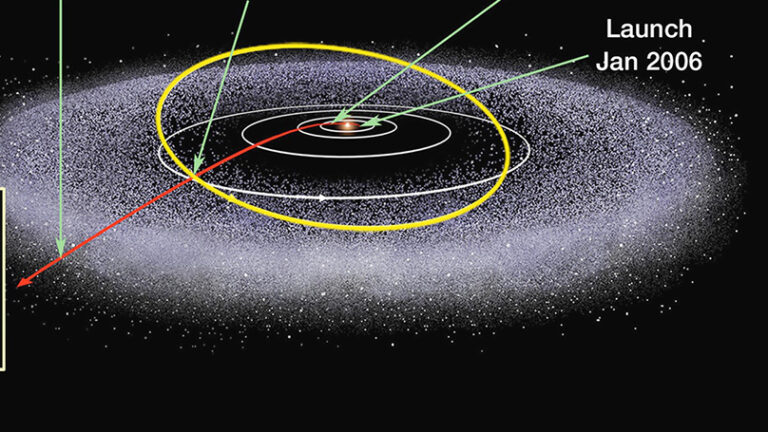
In the outer reaches of the Solar System, beyond the ice giant Neptune, lies a ring of comets and dwarf planets known as the Kuiper Belt. The closest of these objects are billions of kilometers away. There is, however, an outer limit to the Kuiper Belt. Right?
Until now, it was thought there was nothing beyond 48 AU (astronomical units) from the Sun, (one AU is slightly over 150 million km). It seemed there was little beyond that. That changed when NASA’s New Horizons team detected 11 new objects lurking from 60 to 80 AU. What was thought to be empty space turned out to be a gap between the first ring of Kuiper Belt objects and a new, second ring. Until now, it was thought that our Solar System is unusually small when compared to exosolar systems, but it evidently extends farther out than anyone imagined.
While these objects are only currently visible as pinpoints of light, and Fraser is allowing room for error until the spacecraft gets closer, what their existence could tell us about the Kuiper Belt and the possible origins of the Solar System is remarkable.
Living on the edge
The extreme distance of the new objects has put them in a class all their own. Whether they are similar to other Kuiper Belt objects in morphology and composition remains unknown, since they are so faint. As New Horizons approaches them, observations are now simultaneously being made with its LORRI (Long Range Reconnaissance Imager) telescope and the Subaru Telescope, which might reveal that they actually do not belong to a different class in terms of composition.
“The reason we’re using Subaru is its Hyper Suprime-Cam, which has a really wide field of vision,” New Horizons researcher Wesley Fraser, who led the study, told Ars Technica (the results are soon to be published in the Planetary Science Journal). “The camera can go deep and wide quickly, and we stare down the pipe of LORRI, looking down that trajectory to find anything nearby.”




















+ There are no comments
Add yours